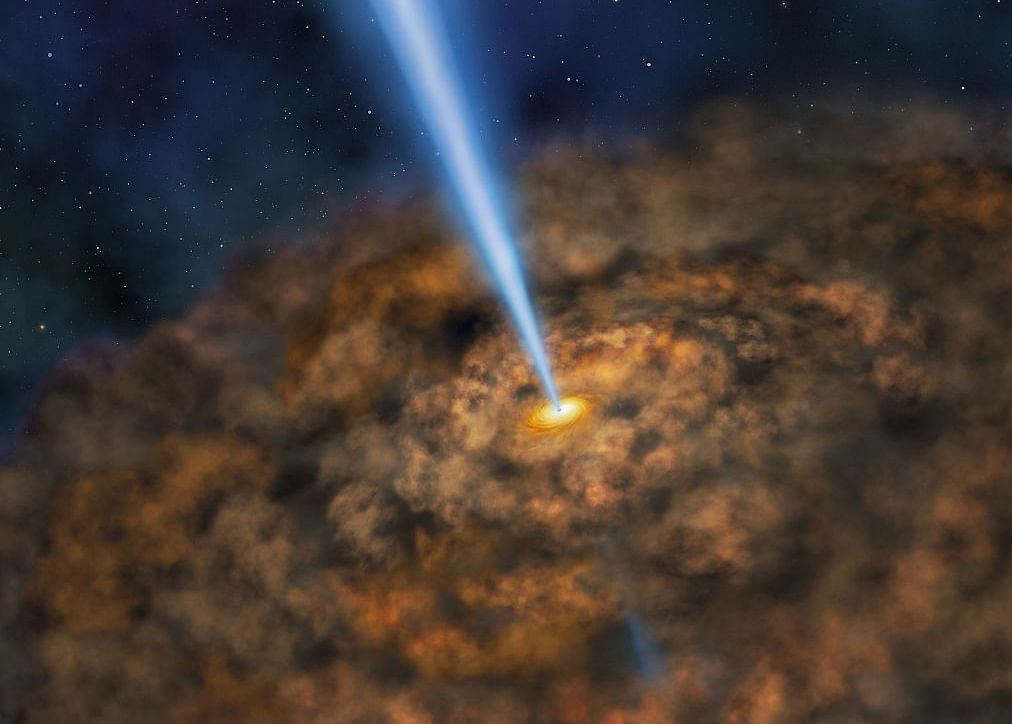
As the world collectively holds its breath in anticipation of the first ever photograph of a black hole, to be released later today by the scientists working in the Event Horizon Telescope (EHT), DH shows you a collection of simulations and generated pictures used by scientists and artists to imagine and picture what black holes could possibly look like.
Here are some photos of what black holes could possibly look like:
NASA image obtained on December 4, 2013, shows two black holes entwined in a gravitational tango in this artist's conception.
MUST READ: Watch LIVE | First ever image of black hole out at around 6:30 PM
Artist's concept of the MWC 656 system, which consists of a massive "Be" star and a companion black hole. The star rotates at very high speed, ejecting an equatorial disc of matter that is transferred to the black hole through an accretion disc.
The cross marks the location of the black hole Cygnus X-1 in this radio image. The bright region to the left (east) of the black hole is a dense cloud of gas existing in the space between the stars, the interstellar medium. The action of the jet from Cygn.
Theoretical calculations predict that the Milky Way's central black hole, called Sagittarius A*, will look like this when imaged by the Event Horizon Telescope. The false-color image shows light radiated by gas swirling around and into a black hole. The dark region in the middle is the "black hole shadow," caused by the black hole bending light around it.
These images, taken with NASA's Galaxy Evolution Explorer and the Pan-STARRS1 telescope in Hawaii, show a brightening inside a galaxy caused by a flare from its nucleus. The arrow in each image points to the galaxy. The flare is a signature of the galaxy's central black hole shredding a star that wandered too close.
This annotated image labels several features in the simulation, including the event horizon of the black hole.
On left, a blob of glowing hydrogen gas appears yellow. On right, the blue light is evidence for a growing supermassive black hole in the center of the galaxy. The hydrogen gas appears yellow.
Artist's schematic impression of the distortion of space-time by a supermassive black hole at the center of a galaxy. The black hole will swallow dark matter at a rate which depends on its mass and on the amount of dark matter around it.
A massive black hole hidden at the center of nearby galaxy, Centaurus A, feeds on a smaller galaxy in a spectacular collision.
Combining observations done with ESO's Very Large Telescope and NASA's Chandra X-ray telescope, astronomers have uncovered the most powerful pair of jets ever seen from a stellar black hole. The black hole blows a huge bubble of hot gas, 1000 light-years
This handout artist's impression released on August 7, 2017, by the European Southern Observatory (ESO) agency shows the orbits of three of the stars very close to the supermassive black hole at the center of the Milky Way.
A supermassive black hole, millions to billions times the mass of our sun, is seen in an undated NASA artist's concept illustration.